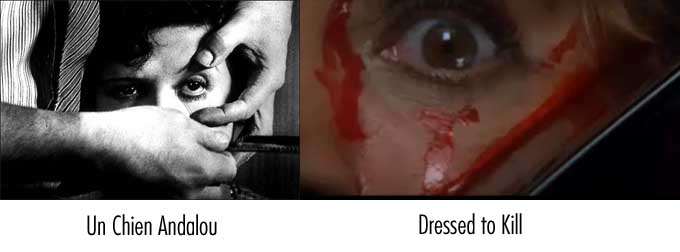If all De Palma films come from Hitchcock, then all words written about De Palma must originate from Pauline Kael. Kael once identified De Palma’s style as “a perverse mixture of comedy and horror and tension” that came with “a lulling sensuousness. He builds our apprehensions languorously, softening us for the kill.”
That’s a highfalutin and reserved way of ignoring one possible takeaway: if Brian De Palma were not a filmmaker, he may have ended up as some kind of felon. Indeed, so subtly disturbing is his imagery, murderously more so on the big screen, that one is tempted to give the man a movie camera before he hurts someone. I’ve had conversations with film buffs over the years and I’ve been relieved to learn that I am not alone in having these momentary thoughts. But “softening us for the kill” or speculative homicidal impulses don’t really permit us to understand De Palma.
Now thanks to a retrospective series that you can still catch at BAMcinématek, there’s an opportunity to see just how potent the man’s films are. There are three films left in the De Palma Suspense series. There’s Raising Cain, a somewhat unfairly condemned late period movie that Peter Travers once described as a “De Palma movie made by a forger who can barely conceal his contempt for the artist he’s copying.” But was De Palma mimicking Hitchcock or the Hitchcock pilferer he was always being pegged as? More promising than Raising Cain is the vibrant and elegant Femme Fatale, in which De Palma more successfully embodies homage into homage, including a brazen “seven years later” flashforward, a film festival within the film, and numerous cinematic archetypes.
But the last film still playing is Dressed to Kill, one of De Palma’s masterpieces. Its mixture of sex and violence proved to be too much for some audiences in 1980. It was protested by at least one group that declared in its circular: “DRESSED TO KILL ASSERTS THAT WOMEN CRAVE PHYSICAL ABUSE; THAT HUMILIATION. PAIN, AND BRUTALITY ARE ESSENTIAL TO OUR SEXUALITY.”
This is a misread, I think. One only needs to discern the manner in which the camera cranes in on a closing elevator door, catching the reflection of a woman being murdered, to see that voyeurism has much to do with this brutality. As the grisly scene plays out, we see (above) a connection to Un Chien Andalou. Yet while Dali and Bunuel were eager to slice the eyeball, De Palma does not. He leaves the razor there and slices the cheek. Is all violence equal in cinema? Or is De Palma’s razor the new tongue? If the latter, it’s a very twisted joke.
There is something valiantly creepy about De Palma’s films before Bonfire of the Vanities. It’s probably a mistake to ascribe some ethical code, whether religious or not, to movies that have the effrontery to depict atavistic human emotions. (I especially admire this attempt to comprehend De Palma through his lack of religious affiliation: “There is no indication that De Palma was an active churchgoer or member of an organized congregation or denomination as an adult.”) But the boldness cuts both ways, so to speak. One can feel unsettled by the needless punishment that Angie Dickinson receives for having an affair in Dressed to Kill (even as one remains dazzled by that movie’s museum scene), while also applauding the bravery in broaching intense father-daughter relationships in Obsession.
To some degree, this willingness to depict the unpleasant aligns De Palma with such iconoclasts as Lina Wertmüller (declared misogynist by many for Swept Away) and Dario Argento (whose hands have always portrayed the hands of any male murderer he depicts on screen). But by cementing human behavior in cinematic history, he’s suggesting something more dangerous and intriguing. In cinema, all emotion is valid. Cinematic language permits us to confront our darkest emotions in the smoothest of terms. If that is one method of appreciating his films, then it seems incumbent for any serious filmgoer to see his work on a movie screen. From what I understand, this is becoming an increasingly dicier situation. I am informed that Sisters requires forty to fifty thousand dollars worth of restoration work and that most of the prints, save two (owned respectively by producer Ed Pressman and MOMA), are largely faded.

